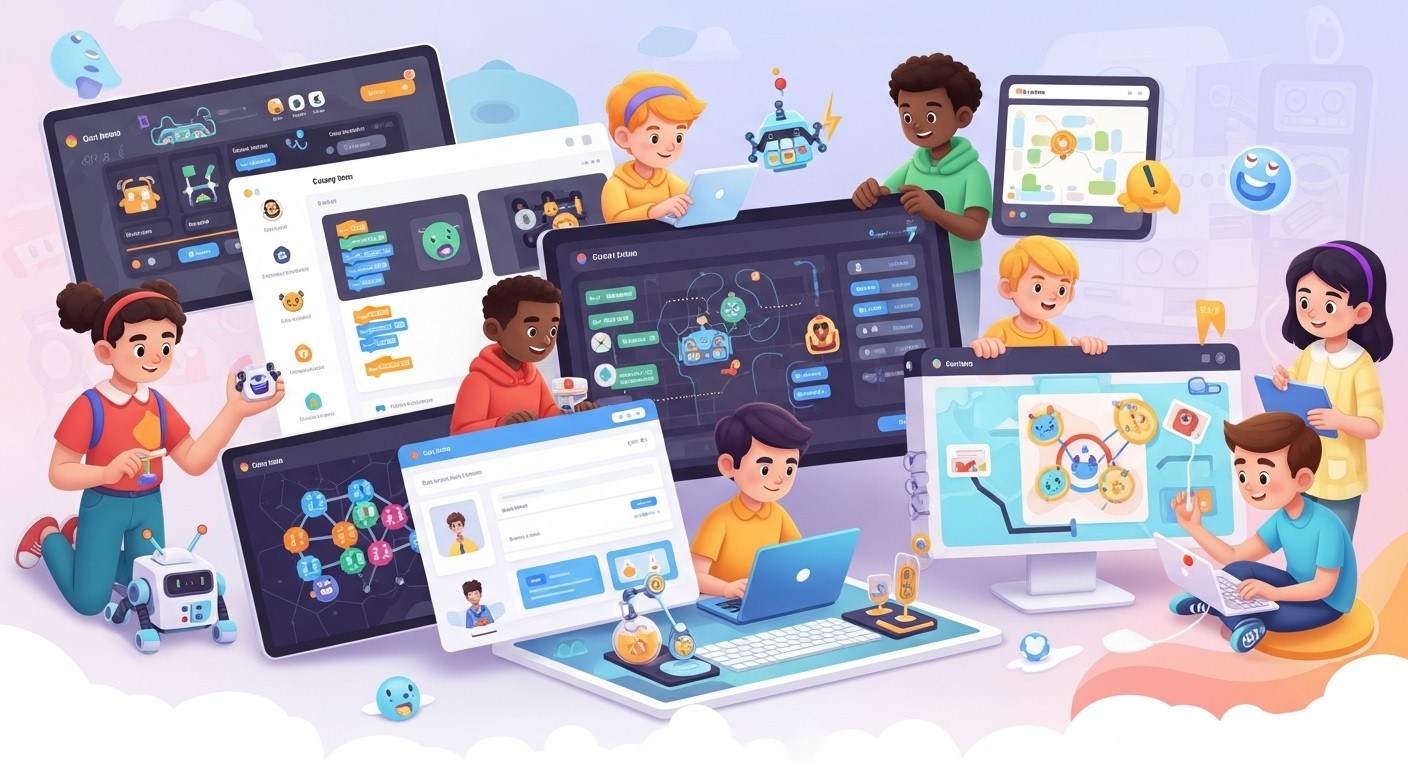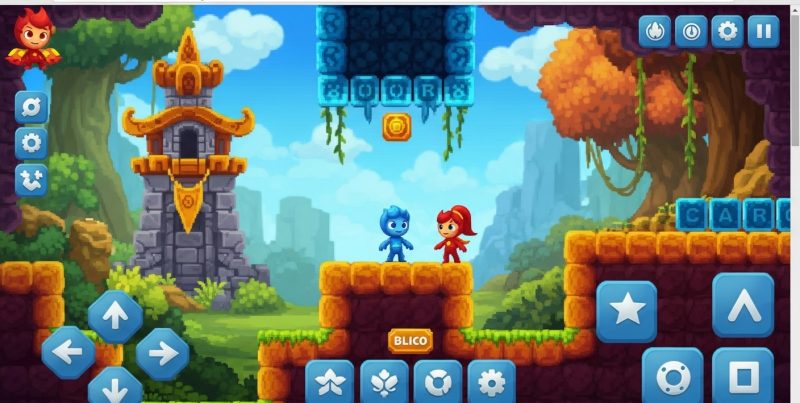Engineering isn’t just about textbooks and formulas—it’s about creative problem-solving, critical thinking, and hands-on experimentation. Engineering.com Games offers a collection of interactive STEM games designed to challenge and entertain engineers, students, and curious minds alike.
Imagine learning engineering not from dense textbooks, but by building virtual bridges, coding robots, or launching rockets—where failure is just part of the fun. That’s the magic of STEM games.
These interactive experiences turn complex science and math concepts into engaging challenges that feel more like play than work. Instead of memorizing formulas, you tweak gears to see how they spin, adjust circuits to light up a city, or stabilize wobbly structures—all while developing real-world problem-solving skills.
What makes STEM games special? They meet learners where they are. Whether you’re a curious kid, a student struggling with physics, or a professional brushing up on skills, these games make learning intuitive, hands-on, and even thrilling. They prove that education doesn’t have to be boring—it can be a playground for innovation.
From dynamic systems simulations to physics-based puzzles, these games turn complex engineering concepts into engaging experiences. Below, we explore Engineering.com Games’ five pages worth of STEM games that will test your skills, expand your knowledge, and maybe even spark a breakthrough idea.
Page 1: Mechanical & Structural Engineering.com Games
1. Dynamic Systems
🔹 Objective: Adjust springs, dampers, and masses to stabilize mechanical systems.
🔹 Skills Learned: Control theory, harmonic motion, PID tuning.
🔹 Why Play? Perfect for understanding vibration control in robotics and machinery.
2. Bridge Constructor (Similar to Engineering.com Games’ structural challenges)
🔹 Objective: Build bridges that withstand loads without collapsing.
🔹 Skills Learned: Structural integrity, force distribution, material efficiency.
🔹 Why Play? Great for civil engineers and architects.
3. Gear Simulator
🔹 Objective: Design gear trains to transfer motion efficiently.
🔹 Skills Learned: Mechanical advantage, torque transmission, gear ratios.
🔹 Why Play? Essential for automotive and industrial machine design.
Page 2: Electrical & Computer Engineering Games
4. Logic Circuit Sandbox
🔹 Objective: Create digital circuits using AND, OR, and NOT gates.
🔹 Skills Learned: Boolean logic, computer architecture, chip design.
🔹 Why Play? A must for future computer engineers.
5. Ohm’s Law Challenge
🔹 Objective: Solve voltage, current, and resistance puzzles.
🔹 Skills Learned: Electrical theory, circuit analysis.
🔹 Why Play? Helps EE students visualize circuit behavior.
6. Robot Programming Lab
🔹 Objective: Code virtual robots to complete tasks.
🔹 Skills Learned: Algorithmic thinking, automation, feedback loops.
🔹 Why Play? Prepares you for real-world robotics engineering.
Page 3: Aerospace & Fluid Dynamics Games
7. Kerbal Space Program (STEM Edition)
🔹 Objective: Design and launch rockets into orbit.
🔹 Skills Learned: Orbital mechanics, thrust-to-weight ratios, aerodynamics.
🔹 Why Play? NASA engineers actually use this for training!
8. Fluid Flow Simulator
🔹 Objective: Manipulate pipes and pumps to optimize flow.
🔹 Skills Learned: Bernoulli’s principle, viscosity, turbulence.
🔹 Why Play? Key for HVAC and hydraulic engineers.
9. Wind Turbine Designer
🔹 Objective: Maximize energy output under varying wind conditions.
🔹 Skills Learned: Renewable energy systems, aerofoil efficiency.
🔹 Why Play? Critical for sustainable engineering careers.
Page 4: Civil & Environmental Engineering Games
10. City Planner (SimCity meets engineering)
🔹 Objective: Balance infrastructure, traffic, and pollution.
🔹 Skills Learned: Urban design, resource management.
🔹 Why Play? Teaches real-world city engineering challenges.
11. Earthquake Tower Challenge
🔹 Objective: Build skyscrapers that survive seismic waves.
🔹 Skills Learned: Vibration damping, structural resilience.
🔹 Why Play? Vital for earthquake-prone region builders.
12. Pollution Cleanup Simulator
🔹 Objective: Restore ecosystems by managing contaminants.
🔹 Skills Learned: Environmental remediation, chemical diffusion.
🔹 Why Play? Prepares you for green engineering careers.
Page 5: Cross-Disciplinary STEM Challenges
13. The Engineer’s Puzzle Box
🔹 Objective: Solve Rube Goldberg-style mechanical puzzles.
🔹 Skills Learned: Systems thinking, creative problem-solving.
🔹 Why Play? Sharpens out-of-the-box innovation.
14. AI Traffic Optimizer
🔹 Objective: Program self-driving cars to reduce congestion.
🔹 Skills Learned: Machine learning, logistics, swarm intelligence.
🔹 Why Play? The future of smart city engineering.
15. Mars Colony Designer
🔹 Objective: Build a habitat for human survival on Mars.
🔹 Skills Learned: Interdisciplinary engineering (life support, energy, structures).
🔹 Why Play? Pushes the boundaries of human ingenuity.
Why STEM Games Are So Important
STEM (Science, Technology, Engineering, and Math) games are more than just fun—they’re powerful learning tools that bridge the gap between theory and real-world problem-solving. Here’s how playing Engineering.com Games can boost your skills:
1. Learning Through Experience
Traditional education often focuses on memorization, but STEM games let players experiment, fail, and adapt in a risk-free environment. Whether building bridges or coding robots, players gain hands-on experience that textbooks can’t provide.
2. Making Complex Concepts Fun
Equations and formulas can feel abstract, but games turn them into interactive challenges. For example, a fluid dynamics puzzle helps players “see” how pressure and flow interact, making tough subjects more intuitive.
3. Developing Critical Thinking
STEM games force players to analyze, strategize, and troubleshoot—skills every engineer needs. Games like Dynamic Systems teach control theory by letting players tweak springs and dampers until their system stabilizes.
4. Encouraging Creativity
There’s rarely just one right answer in engineering. Games like Kerbal Space Program reward creative solutions, teaching players to innovate under constraints—just like real-world engineers.
5. Preparing for Future Careers
Many STEM games simulate real industry tools (e.g., CAD software, circuit simulators). By playing, students gain early exposure to skills they’ll use in jobs, giving them a competitive edge.
6. Building Persistence
Failure is part of engineering. Games normalize setbacks—like a collapsing bridge or a crashed rocket—and teach players to iterate and improve, fostering resilience.
7. Accessibility for All Ages
From kids to professionals, STEM games make learning engaging and inclusive. A middle schooler might discover a passion for coding, while an engineer hones their aerodynamics knowledge.
The Bottom Line
STEM games transform learning from passive to active, turning complex subjects into playful, memorable experiences. They’re not just games—they’re the future of education.







